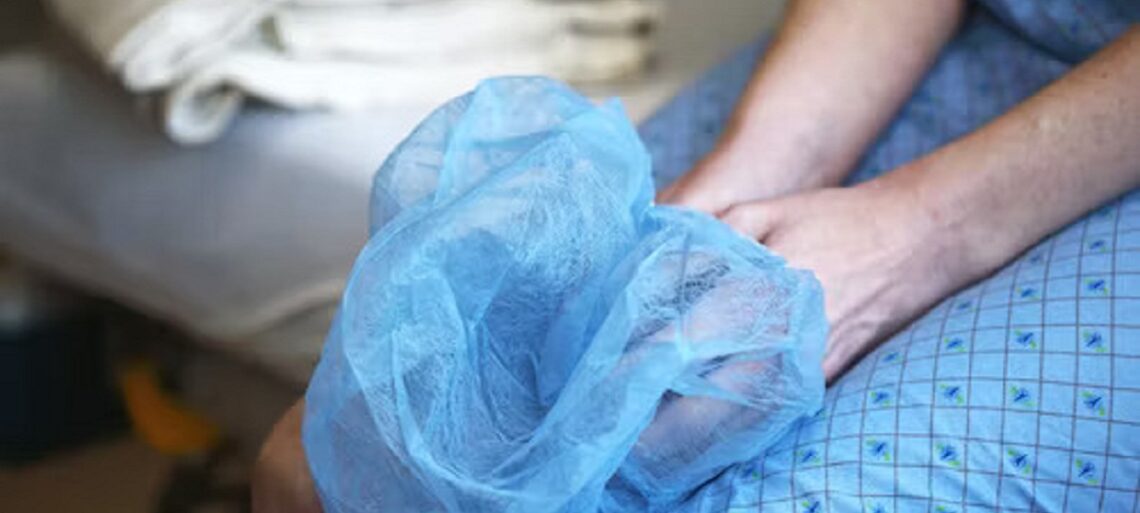
How do You Fix Spinal Stenosis Without Surgery
Spinal stenosis is a medical condition that causes the narrowing of the spinal canal, putting pressure on the spinal cord and nerves. This can result in pain, numbness, and weakness in the back, neck, arms, or legs. While surgery may be necessary in severe cases, there are several non-surgical treatment options available that can help manage and alleviate the symptoms of spinal stenosis effectively.
Understanding Spinal Stenosis
Definition of Spinal Stenosis
Spinal stenosis occurs when the spaces within the spine narrow, compressing the nerves and causing discomfort. It commonly affects the lower back (lumbar stenosis) and the neck (cervical stenosis). The condition is often linked to age-related degeneration of the spine and can be exacerbated by injuries and other medical conditions.
Causes of Spinal Stenosis
Spinal stenosis can be caused by various factors, such as herniated discs, bone spurs, thickened ligaments, and tumors. Additionally, age-related wear and tear on the spine, known as osteoarthritis, can also contribute to the development of spinal stenosis.
Symptoms of Spinal Stenosis
Symptoms of spinal stenosis may include pain, tingling, weakness, and numbness in the affected area. Patients might experience difficulty walking or standing for extended periods, and symptoms may worsen over time if not addressed promptly.
Non-Surgical Treatment Options
Physical Therapy
Physical therapy plays a crucial role in the non-surgical management of spinal stenosis. Therapists can design personalized exercise programs to strengthen the core, improve flexibility, and alleviate pressure on the affected nerves.
Medications
Over-the-counter pain relievers, such as nonsteroidal anti-inflammatory drugs (NSAIDs), can provide temporary relief from pain and inflammation. Additionally, muscle relaxants may help reduce muscle spasms associated with spinal stenosis.
Epidural Injections
Epidural injections of corticosteroids can be administered to reduce inflammation and relieve pain in the affected area. These injections can provide significant pain relief for several weeks or months.
Chiropractic Care
Chiropractic adjustments can help realign the spine, improving mobility and reducing nerve compression. Many patients find chiropractic care beneficial in managing their spinal stenosis symptoms.
Lifestyle Changes to Manage Spinal Stenosis
Exercise and Stretching
Regular low-impact exercises, such as walking, swimming, and biking, can help improve flexibility and strengthen the muscles surrounding the spine. Stretching exercises can also alleviate tension and pressure in the affected area.
Weight Management
Maintaining a healthy weight is essential for individuals with spinal stenosis, as excess weight can put additional strain on the spine and worsen symptoms.
Posture Improvement
Practicing good posture can reduce the stress on the spine and minimize discomfort. Using ergonomic furniture and avoiding prolonged periods of sitting or standing can be beneficial.
Pain Management Techniques
Heat and ice therapy, as well as transcutaneous electrical nerve stimulation (TENS), can provide temporary relief from pain and muscle spasms associated with spinal stenosis.
Alternative Therapies
- Acupuncture: Acupuncture, an ancient Chinese therapy, involves the insertion of thin needles into specific points on the body to promote pain relief and relaxation.
- Yoga and Tai Chi: Yoga and Tai Chi are low-impact exercises that focus on stretching, balance, and mindfulness, which can be beneficial for individuals with spinal stenosis.
- Heat and Cold Therapy: Applying heat pads or cold packs to the affected area can help reduce inflammation and alleviate pain.
Spinal Stenosis Braces and Supports
- Lumbar Support Belts: Lumbar support belts can provide additional support to the lower back and help alleviate pressure on the spine.
- Cervical Collars: Cervical collars can stabilize the neck and reduce strain on the cervical spine.
- Back Braces: Back braces can be used to support the entire spine and improve posture.
Role of Nutrition in Spinal Stenosis
- Anti-Inflammatory Diet: Following an anti-inflammatory diet rich in fruits, vegetables, and omega-3 fatty acids can help reduce inflammation and manage pain.
- Supplements for Joint Health: Certain supplements, such as glucosamine and chondroitin, may support joint health and alleviate symptoms of spinal stenosis.
- Hydration: Staying hydrated is essential for maintaining spinal disc health and preventing dehydration-related muscle cramps.
Importance of Rest and Sleep
- Sleep Positions: Using proper sleep positions, such as sleeping on the side with a pillow between the knees, can reduce pressure on the spine during rest.
- Mattress and Pillow Selection: Choosing a mattress and pillows that provide adequate support can significantly improve sleep quality for individuals with spinal stenosis.
Mind-Body Techniques for Pain Relief
- Meditation and Mindfulness: Practicing meditation and mindfulness can help manage pain and reduce stress, promoting overall well-being.
- Breathing Exercises: Breathing exercises can aid in relaxation and reduce tension in the muscles surrounding the spine.
Maintaining Regular Medical Check-ups
Monitoring Spinal Stenosis Progression
Regular visits to a healthcare professional can help monitor the progression of spinal stenosis and ensure timely adjustments to the treatment plan.
Adjusting Treatment Plan as Needed
Medical professionals can assess the effectiveness of non-surgical treatments and make necessary changes based on the patient’s condition.
Preventive Measures to Avoid Spinal Stenosis
- Exercise and Strengthening: Regular exercise and strengthening of the core muscles can help prevent or delay the onset of spinal stenosis.
- Ergonomics in Daily Activities: Maintaining proper ergonomics at work and home can reduce the risk of developing spinal stenosis.
Conclusion
Spinal stenosis can be a debilitating condition, but surgery is not always the only option for treatment. Non-surgical approaches can effectively manage symptoms and improve the quality of life for individuals with spinal stenosis. By incorporating physical therapy, lifestyle changes, alternative therapies, and supportive devices, patients can experience relief from pain and discomfort.


